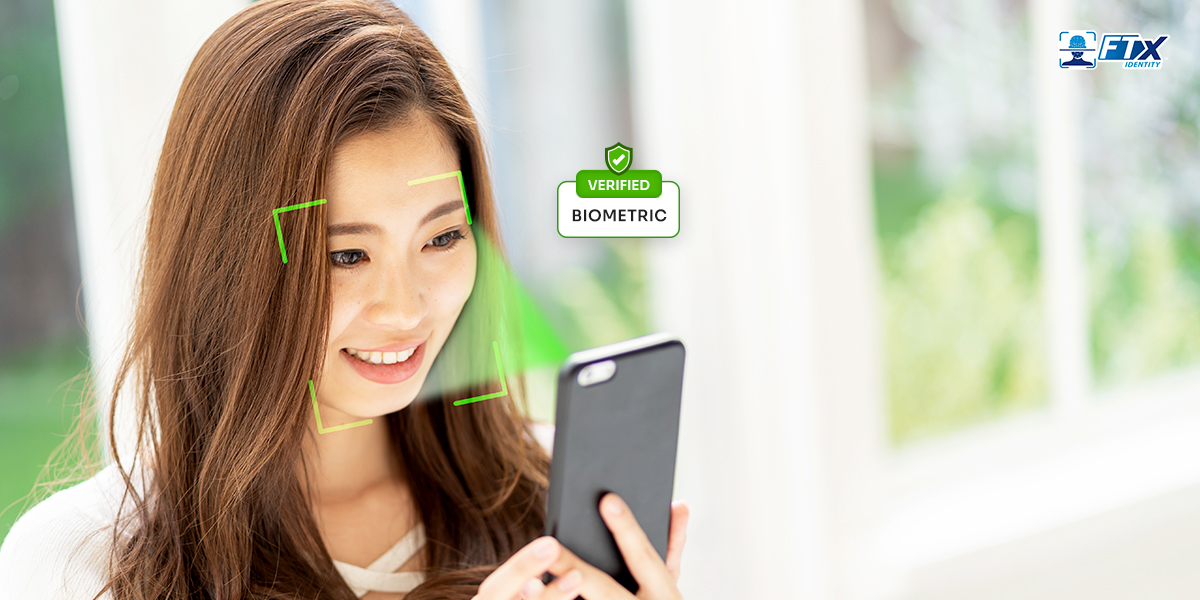Remember those futuristic movies where a simple glance unlocked a vault? That “sci-fi” is now our reality. Biometrics, once confined to the silver screen, have broken free and are rapidly becoming the bedrock of real-world security.
After a $9 billion revenue generation in 2022, the global biometrics market is on a strong growth trajectory, anticipated to exceed $31 billion in value by 2030!
-Statista
Biometric authentication offers numerous benefits. It can reduce manual errors, protect businesses against deepfakes, and help prevent the latest cyber security threats.
This blog post will be your compass in this evolving landscape. We’ll delve into the transformative vision of biometrics, dissect the core technologies making it possible, address the crucial ethical considerations, and explore the diverse applications already reshaping our world. Join us as we uncover why the future of identity unequivocally demands biometrics.
Why the Future of Identity Demands Biometrics
The escalating reliance on digital interactions has brought the vulnerabilities of traditional identity verification methods into sharp focus. The growing popularity of biometrics isn’t a mere trend; it’s a necessary evolution to address the inherent flaws of outdated systems.
The Identity Crisis in the Digital World

We live in an era plagued by a surge in identity theft and digital impersonation. The Federal Trade Commission (FTC) revealed a disturbing upward trend, with over 1.1 million reported cases of identity theft in 2024. This digital Wild West costs individuals and businesses billions annually, eroding trust and demanding more robust security measures.
Traditional verification methods – passwords, OTPs (one-time passwords), and knowledge-based authentication (KBA) questions (think, “What was your mother’s maiden name?”) – are proving increasingly inadequate. Passwords are forgotten, OTPs can be intercepted, and KBA relies on easily discoverable or guessable information. Even device-based authentication, while an improvement, can be compromised if the device itself is compromised.
Why Biometrics Is the Most Viable Future-Proof Solution
Biometrics offers a fundamental shift in identity verification: it authenticates what you are, not just what you know or what you have. This inherent link to an individual’s unique biological or behavioral traits makes it significantly harder to replicate or steal. For decision-makers seeking scalable and secure identity frameworks, biometrics presents a compelling and future-proof solution to the growing pains of digital identity management.
Core Biometric Technologies Shaping the Future
The power of biometrics lies in its diverse array of biometric technologies, each with unique strengths and applications.
1. Facial Recognition: Analyzing unique facial features for identification.
- Use Cases: Smooth and hassle-free airport security and customized shopping experiences at retail kiosks.
- Real-world reference: Airport e-gates utilizing facial recognition for swift passenger processing.
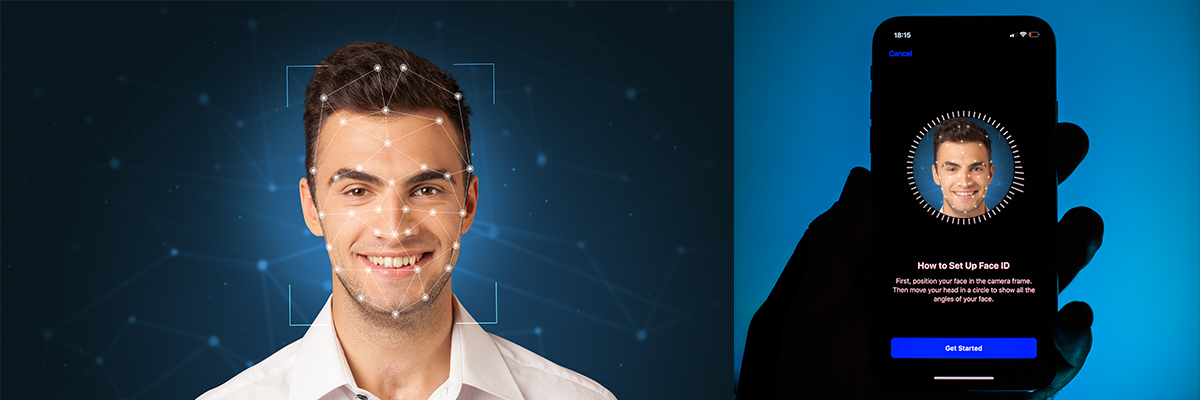
2. Fingerprint & Palm Vein Scanning: Identifying individuals through unique fingerprint patterns or vein structures in the palm.
- Use Cases: Mobile device unlocking and payments, secure workforce management systems for time and attendance.
- Real-world reference: Apple and Samsung both deploy fingerprint scanning and facial authentication for mobile payments. Some banking ATMs use palm vein scanning for enhanced security.
3. Iris & Retina Scans: Analyzing the intricate patterns of the iris (the colored part of the eye) or the retina (the back of the eye).
- Use Cases: High-security environments like defense facilities, stringent border control, and access to sensitive data.
- Real-world reference: Some border control agencies utilize iris scans for rapid and accurate identification.
4. Behavioral Biometrics: Identifying users based on their unique patterns of interaction with devices, such as typing speed, mouse movements, and gait.
- Use Cases: Real-time fraud prevention in fintech, continuous authentication in secure applications.
- Real-world reference: Financial institutions analyzing user behavior patterns to detect anomalous activity indicative of fraud.
5. Voice Biometrics: Identifying individuals through unique characteristics of their voice.
- Use Cases: Secure call center authentication, hands-free access for individuals with disabilities.
- Real-world reference: Banks using voice biometrics to verify customers over the phone.
Mini-Glossary
- Liveness Detection: Techniques used to ensure that the biometric data is being captured from a live person and not a spoof (e.g., a photograph or recording).
- Spoofing: Attempting to deceive a biometric system by presenting a fake biometric sample.
- Multi-Modal: Combining two or more different biometric modalities (e.g., face) to enhance security and accuracy.
Emerging Trends That Will Define the Next Decade
- Biometric Fusion (Multi-Modal Systems): The increasing adoption of systems that combine multiple biometric technologies for higher accuracy and resilience against spoofing. This layered approach significantly strengthens security measures.
- Zero Trust & Biometric Gateways: Integrating biometrics as a crucial layer within Zero Trust security architectures and deploying biometric gateways for seamless and secure Single Sign-On (SSO), often incorporating behavioral and liveness checks.
- Passwordless Authentication: The accelerating move towards eliminating traditional passwords entirely, with biometrics playing a central role in securing digital wallets, applications, and online services.
- On-Device Processing & Edge AI: Processing biometric data directly on the user’s device, leveraging Edge AI systems to enhance privacy by minimizing data transmission to centralized servers and enabling faster authentication. This aligns with privacy-by-design principles.
- Privacy-by-Design in Biometric Architecture: Building biometric systems with privacy as a fundamental design principle, incorporating techniques like decentralized data storage and anonymization to adhere to regulations like GDPR and CCPA.
This evolution directly addresses the need to revolutionize the verification process, moving towards more secure, user-friendly, and privacy-respecting methods.
Why Is Biometrics ID Verification Important?

Repurposing and enhancing previous discussions, the importance of biometric authentication for identity verification cannot be overstated. It provides a far more reliable and efficient means of confirming an individual’s identity compared to traditional methods. This is crucial for:
- Enhancing Security: Significantly reducing the risk of identity theft and fraud across various sectors.
- Improving User Experience: Offering faster, more convenient, and frictionless authentication processes.
- Ensuring Regulatory Compliance: Helping organizations meet stringent data security and privacy requirements like GDPR.
- Facilitating Accessibility: Providing alternative authentication methods for individuals who may have difficulty with passwords or other traditional approaches.
- Strengthening Law Enforcement: Providing more accurate and efficient tools for identification and crime prevention.
- Remote Work: The shift to remote work has created a need for secure digital identity verification methods.
Challenges Ahead: Ethics, Privacy & Regulation
Despite its immense potential, the widespread adoption of biometrics is not without its challenges. Careful consideration of ethical considerations, privacy implications, and the evolving regulatory landscape is paramount.
- Ethical Dilemmas: Concerns surrounding surveillance creep and the potential for bias in facial recognition algorithms, particularly across different demographic groups.
- Data Ownership & Biometric Storage: Debates around who owns biometric data and the security of centralized vs. decentralized storage models.
- Consent Frameworks: Navigating complex consent requirements under regulations like the General Data Protection Regulation (GDPR), California Consumer Privacy Act (CCPA), and Health Insurance Portability and Accountability Act (HIPAA), ensuring users have control over their biometric data.
- Real-World Examples of Backlash or Misuse: Instances like the controversy surrounding Clearview AI highlight the public’s concern over the potential for misuse of biometric technologies.
Biometrics + AI: The Next-Gen Identity Infrastructure
The synergy between biometrics and artificial intelligence (AI) and machine learning (ML) is creating the next generation of identity infrastructure.
- How Generative AI Aids or Threatens Biometric Security: While generative AI can be used to create sophisticated deepfakes that challenge biometric security measures, it also powers advanced liveness detection techniques to counter these threats.
- Deepfakes vs. Deep Verification: The ongoing arms race between AI-generated spoofs and AI-powered verification methods, pushing the boundaries of technological advancements.
- AI-Led Anomaly Detection & Fraud Prevention: AI systems analyze biometric data and user behavior in real-time to detect anomalies indicative of fraudulent activity.
- The Future of Continuous Verification: The potential for AI to enable seamless and continuous authentication based on subtle biometric and behavioral cues throughout a user’s session.
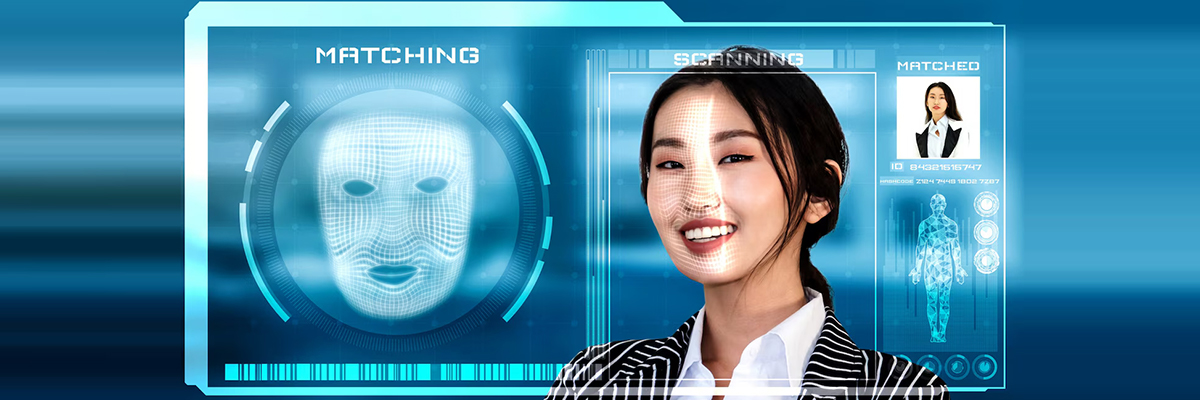
For decision-makers, understanding this dynamic interplay between AI and biometrics is crucial for navigating the future of secure identity verification.
Industries Set to Transform with Next-Gen Biometrics
Building upon previous insights, numerous industries are poised for significant transformation through the adoption of advanced biometric solutions:
- Healthcare: Enhancing patient identification, securing medical records, and streamlining access for healthcare professionals.
- Finance: Fortifying transaction security, enabling seamless mobile banking experiences, and preventing financial fraud.
- Travel & Transportation: Expediting airport security, enabling frictionless border control, and personalizing passenger experiences.
- Retail: Personalizing customer interactions, securing payments, and preventing theft.
- Law Enforcement: Improving identification accuracy, enhancing forensic analysis through technologies like iris scans, and aiding in public safety initiatives.
- Government Services: Securing id cards, streamlining citizen access to services, and ensuring the integrity of elections.
- Workforce Management: Enhancing security for access control, improving time and attendance tracking, and streamlining employee onboarding.
Building Ethical, Scalable Biometric Systems
Implementing biometric solutions effectively requires a commitment to ethical principles and robust security practices.
- Principles of Ethical Design: Prioritizing fairness, transparency, accountability, and minimizing bias in biometric system design and deployment.
- Security-First Implementation: Employing robust liveness detection, end-to-end encryption, and secure biometric data storage to protect against breaches.
- User-Centered Consent Flows: Designing clear and transparent consent mechanisms that empower users to understand and control the collection and use of their biometric data.
- Vendor Selection Checklist: Businesses should ask potential vendors about their data security protocols, ethical guidelines, bias mitigation strategies, and compliance with relevant regulations.
How to Choose a Secure Biometric ID Verification Solution
How can you transition safely? Start with these tips for choosing biometric software for your ID security stack:
1. Choose Reliable Technology
Not all biometric systems are created equal. Choose a system known for its accuracy and reliability, like FTx Identity. It’s also essential to choose a system that fits the business’s specific business.
2. Secure Storage
Biometric data is sensitive and should be stored securely. This can involve encryption, using secure servers, and following best practices for data security. Some systems also use techniques like hashing or tokenization to secure biometric data further.
3. Privacy Compliance
Businesses should comply with all relevant privacy laws and regulations when using biometric data. This can involve obtaining informed consent from users, only collecting necessary data, and providing transparency about how the data is used.
4. Multi-Factor Authentication
Biometrics can be used as part of a multi-factor authentication system where more than one verification method is used. This can provide an additional layer of security. Choose a biometrics platform that will integrate with your existing processes.
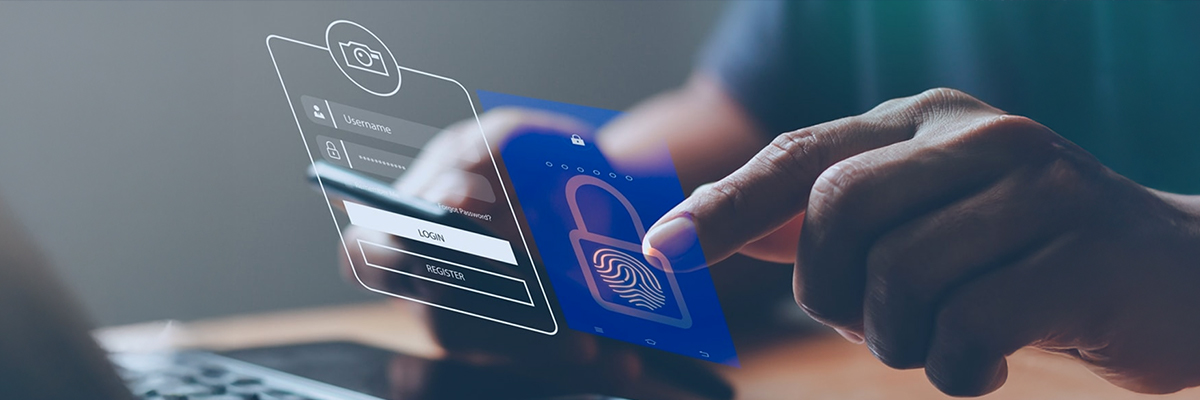
5. Regular Updates and Maintenance
Like any technology, biometric systems should be regularly updated and maintained to ensure they are secure and functioning correctly.
Key Challenges and Concerns in Biometrics
While the potential of biometrics is vast, several key challenges and concerns must be addressed:
1. Data Security and Privacy Issues
The sensitivity of biometric data necessitates robust data security measures to prevent unauthorized access, breaches, and misuse.
2. Potential Misuse or Overreach in Surveillance
Concerns exist regarding the potential for biometric technologies, particularly facial recognition, to be used for mass surveillance and the erosion of privacy.
3. Bias and Discrimination
Bias in algorithms, especially in facial recognition, can lead to inaccurate or discriminatory outcomes for certain demographic groups.
4. Technical Reliability and Accuracy
Ensuring the consistent reliability and accuracy of biometric systems across diverse environmental conditions and user populations is crucial.
5. Economic and Infrastructure Challenges
The cost of implementing and maintaining sophisticated biometric systems can be a barrier for some organizations.
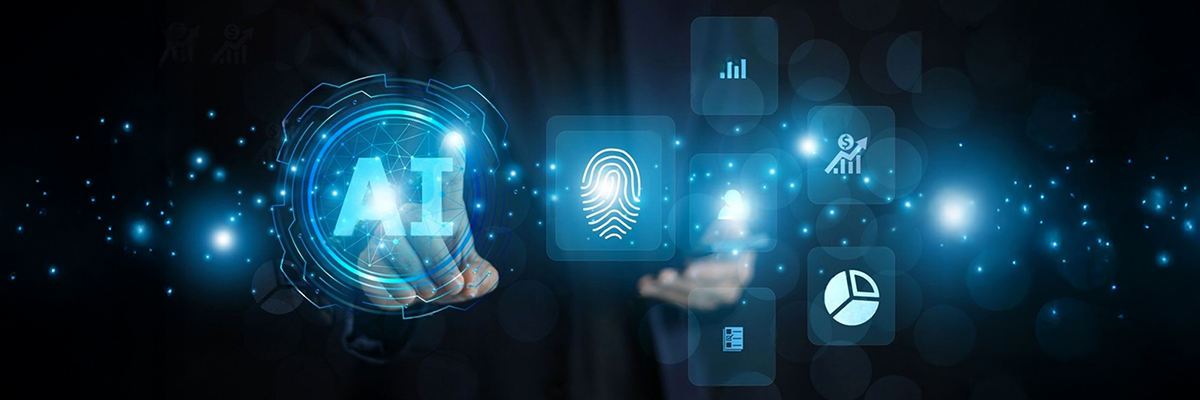
6. Risks Associated with Emerging Technologies
As new biometric technologies and AI integrations emerge, understanding and mitigating potential risks is essential.
Conclusion: From Technology to Trust
In conclusion, biometrics are not merely a technological advancement; they are rapidly becoming the fundamental infrastructure of digital trust. By verifying who we are with unprecedented accuracy and convenience, biometric solutions offer a powerful antidote to the growing challenges of digital identity in a world increasingly threatened by fraud and cybercrime.
At FTx Identity, we are committed to contributing to this future by developing secure and ethical biometric solutions that prioritize user privacy and data protection.
Looking For A Faster, More Secure Way To Verify Identities?
See how FTx Identity’s biometric technology can revolutionize your onboarding process!
